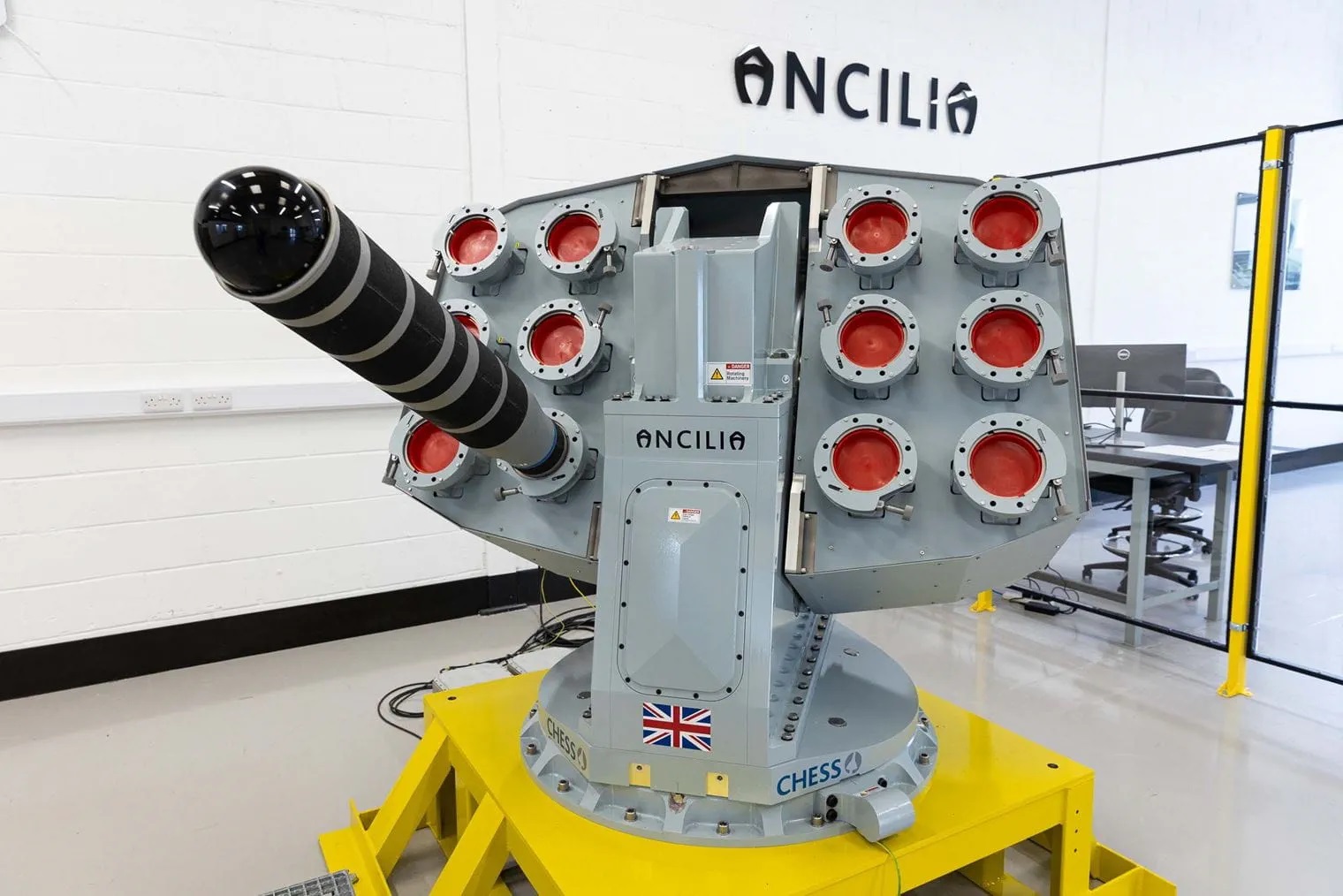Experts dedicated to protecting Royal Navy warships of tomorrow from the next generation of missile threats spent a day in Devon inspecting the Fleet’s new £135m decoy system. More than two dozen serving personnel, civil servants, scientists and engineers – all specialists in electronic warfare/decoy defenses or involved with multi-billion-pound warship programmes – were impressed by their first sight of the Ancilia launcher. Developed by Barnstaple-based firm SEA (Systems Engineering and Assessment), the new decoy launcher will replace the existing Seagnat system employed on major RN ships presently. Ancilia is relatively small, lightweight and capable of firing multiple countermeasures – just like Seagnat. But while Seagnat is fixed – it can only fire in the direction it is pointing, and at a specific angle – Ancilia swivels rapidly and adjusts the angle the decoys are fired at to maximise their effectiveness.
“It was impressive to witness SEA’s pre-production Ancilia trainable launcher put through its paces in front of all the stakeholders. It demonstrated the real engineering progress made so early in the design phase. Ancilia provides a paradigm shift in the Royal Navy’s capability to deploy electronic warfare countermeasures to meet the threat with new more flexible tactics. Importantly the new countermeasures interface will enable the exploitation of intelligent countermeasures which are currently being researched to meet the evolving threat,” said Neil Clelland, the Senior Principal Anti-Ship Missile Scientist with Dstl, the government’s military laboratories.

As a result there’s no need to manoeuvre the ship to counter the incoming threats: Ancilia will face them down. The visit to SEA’s Barnstaple facility covered technical discussions and culminated with a live demonstration of the launcher being put through its paces. Together with the Maritime Electronic Warfare Systems Integrated Capability (MEWSIC) the new decoy system will be the backbone of future electromagnetic operations. Two Ancilia systems are due to be fitted to all six Type 45 destroyers as well as the entire next-generation frigate force: eight Type 26 City-class sub-hunters, and five Type 31 Inspiration-class general purpose warships.
Though rarely publicised, Electromagnetic Warfare is – and will continue to be – the cornerstone of identifying enemy forces, equipment and movement to help the RN plan and conduct operations, along with the sharing of intelligence by exploiting the electromagnetic environment. And in combat, it’s also key to defeating enemy firepower, jamming weaponry or, in the final seconds before a possible missile impact courtesy of decoys drawing the threat away from the ship. The current Seagnat system comprises six 130mm mortars which fire decoys relevant to the threat: flares to deny heat-seeking missiles, chaff – a cloud of tiny strips of foil – to confuse radar-guided threats; and active rounds which descend by parachute and either try to trick an incoming missile into thinking it’s the ship… or jam the missile’s radar.
















